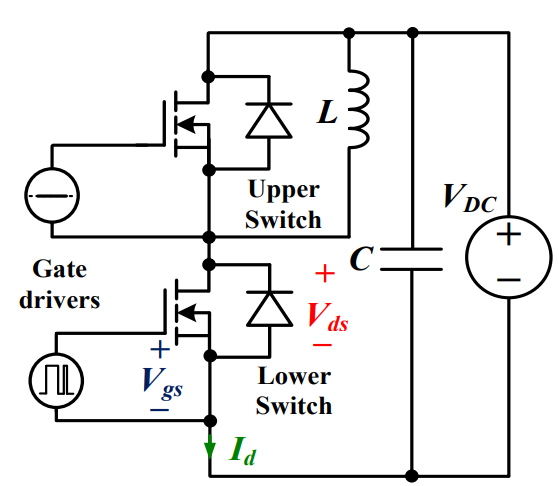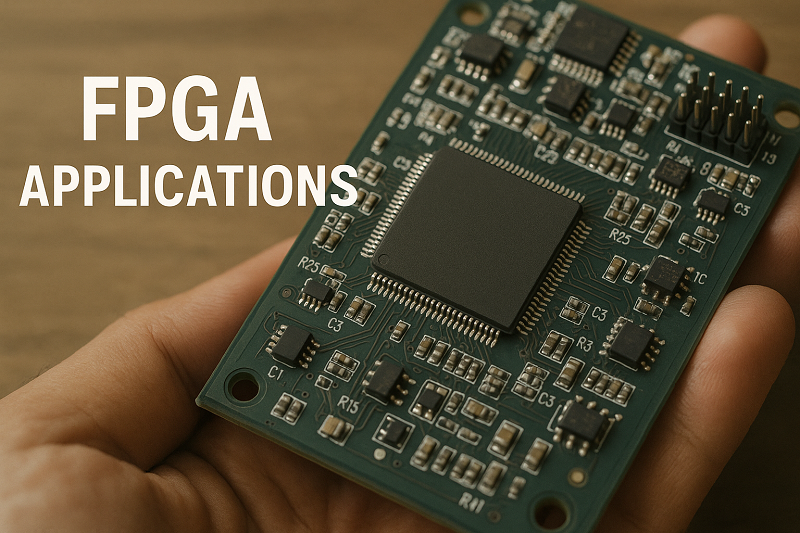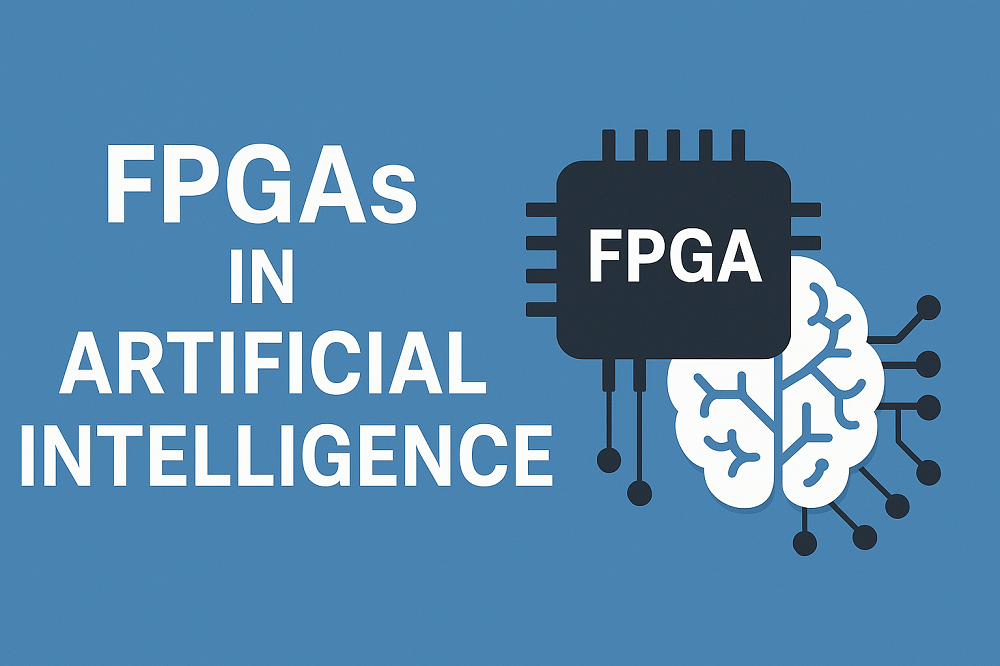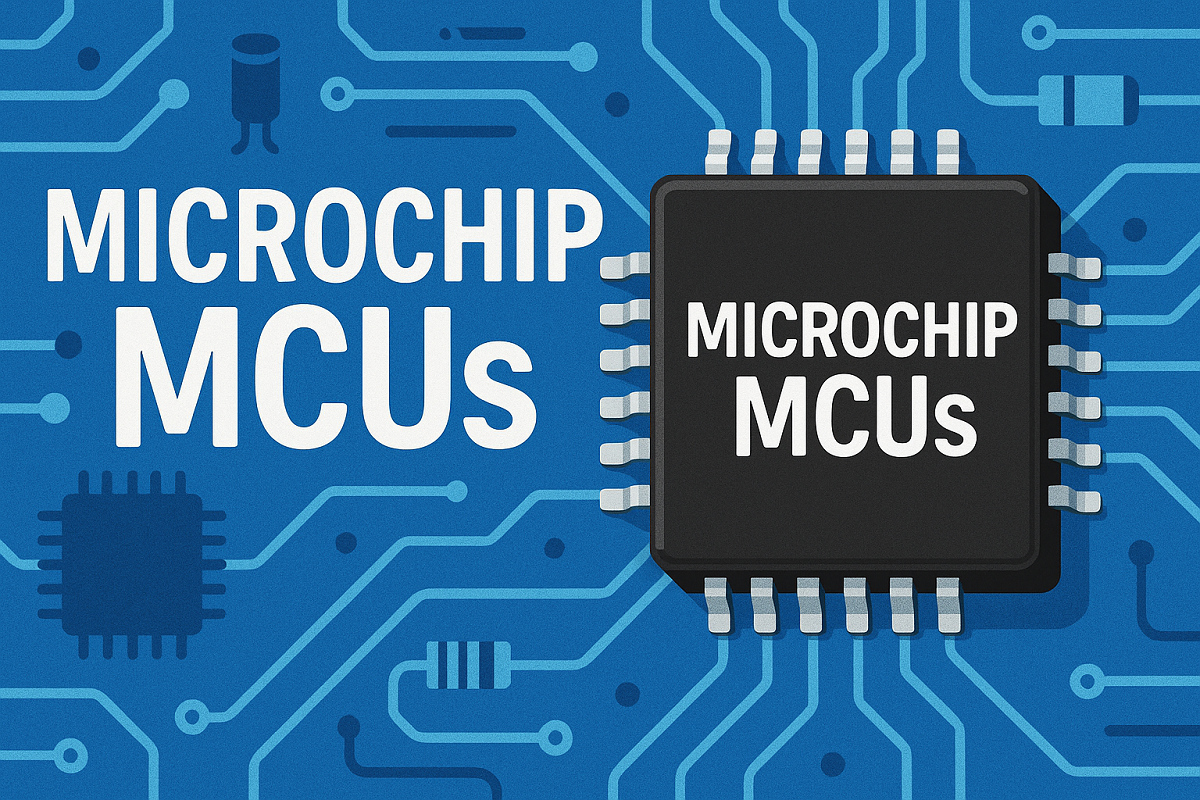Cryogenic Cooling Technology using SiC and GaN Devices
Even though power electronics have made significant advancements utilizing established silicon (Si) devices, the focus is now shifting towards Wide Bandgap (WBG) semiconductor devices, specifically Silicon Carbide (SiC) and Gallium Nitride (GaN). These WBG devices have garnered increasing attention due to their notable characteristics, including low on-state resistance, high-speed switching, and high breakdown voltage. Power converters based on WBG semiconductors exhibit significantly enhanced performance, efficiency, power density, and reliability compared to converters employing traditional Si devices.
The application of cryogenic cooling, which involves ultra-low temperatures below 123 K, shows future scope in power electronics. Cryogenic cooling is typically achieved through the utilization of substances like liquid nitrogen or helium and offers numerous benefits for power electronics. Integrating power electronics into cryogenically cooled systems eliminates the need for separate thermal insulation containers, thereby reducing complexity, cost, size, and weight.
Cryogenic cooling holds significant potential for various applications, including electric aircraft propulsion systems or superconducting machine systems, where the integration of power electronics within the cryogenically cooled environment can substantially enhance system performance and reduce overall complexity. Furthermore, cryogenic cooling can offer general advantages for power electronics, such as improved performance of WBG semiconductor devices at low temperatures, the ability to operate devices at higher switching frequencies, reduced cooling requirements, and the potential for lightweight and efficient conductors.
Ⅰ. Demonstration of SiC Converters Using Cryogenic Cooling
Device characterization at cryogenic temperatures:
To examine the behavior of power devices under extremely low temperatures, a cryogenic temperature chamber is commonly used in laboratory settings. This chamber utilizes liquid nitrogen to regulate the temperature, allowing it to range from room temperature down to a minimum of 93 K. The chamber is designed with thermal insulation both inside and outside to maintain the desired temperature.

Figure 1: Test setup for demonstration at cryogenic temperatures.
A setup similar to the one shown in Figure 1 is used for static characterisation tests. The B1505A curve tracer is connected to the Device Under Test (DUT) to measure its output and transfer characteristics. A Kelvin connection technique is employed to minimize measurement errors caused by long cables.
Summary of SiC and GaN devices characteristics at cryogenic temperatures
Figure 2 illustrates a comparison of the specific on-state resistance of the selected devices. Both silicon (Si) MOSFETs and gallium nitride (GaN) HEMTs exhibit significantly lower specific on-state resistance at cryogenic temperatures. However, Si MOSFETs start to experience an increase in specific on-state resistance at very low temperatures (< 100 K) due to carrier freeze-out, while GaN HEMTs continue to decrease in resistance.

Figure 2: Specific on-state resistance versus temperature between different devices.
All-silicon carbide (SiC) MOSFETs on the other hand demonstrate a notable increase in specific on-state resistance at cryogenic temperatures. Among the devices, GaN HEMTs exhibit the lowest specific on-state resistance at cryogenic temperatures, achieving more than a fivefold reduction compared to room temperature values.

Figure 3: Breakdown voltage versus temperature for different devices.
As shown in Figure 3, SiC MOSFETs and GaN HEMTs generally exhibit relatively constant breakdown voltages, while Si MOSFETs display reduced breakdown voltage as temperature decreases from room temperature to cryogenic levels.
Ⅱ. Demonstration of MW-level sic converter operation with cryogenic cooling
A high-power silicon carbide (SiC) power module-based inverter designed for electric aircraft propulsion applications can deliver a megawatt (MW) of power. This inverter utilizes cryogenic cooling technology to enhance its performance. It operates with a DC input fed from a ±500 V bus to eventually generate a three-phase output with a fundamental frequency that can reach up to 3 kHz.
Device selection
Si MOSFET and GaN HEMT devices excel at cryogenic temperatures, but the lack of high current power modules and suitable commercial packaging poses challenges for an MW inverter. Consequently, a high-current SiC power module is chosen. Although direct cryogenic cooling is not feasible for SiC, cryogenic temperatures still benefit the inverter by providing a lower ambient temperature environment, resulting in lower SiC device junction temperatures during high power operation and improved efficiency. Cryogenic cooling also benefits busbars and filter windings.
Characterization is limited to temperatures above 225 K to protect the silicone gel. The lowest on-state resistance is achieved around 257 K, optimizing the cooling system to maintain the junction temperature near this value. The inverter uses a three-level active neutral point clamped (3L-ANPC) topology, with two 500 kW inverters paralleled and interleaved through coupled inductors to achieve 1 MW power output while reducing harmonic ripples. EMI filters suppress noise and meet DO-160 standards for aircraft applications.
Cooling system design and integration

Figure 4: Cold gas nitrogen cooling concept.
To overcome the limitations of direct liquid nitrogen cooling for the SiC power module, an alternative approach utilizing cold nitrogen gas cooling is adopted. Figure 4 illustrates the cooling concept, where nitrogen gas passes through coils submerged in a liquid nitrogen bucket. The gas is cooled by the liquid nitrogen and then directed to a cold plate for the power module. The cooling performance can be adjusted by controlling the flow rate of the gas through a regulator and adjusting the number of coils turns submerged in liquid nitrogen.
Ⅲ. Challenges SiC and GaN in cryogenic cooling Applications
Cryogenic cooling offers improved performance for wide-bandgap (WBG) devices, particularly GaN HEMTs, compared to room-temperature cooling. It also provides benefits to WBG-based power converters, such as reduced cooling requirements due to the lower operating temperature and the utilization of lightweight and efficient conductors (e.g., busbars and inductor windings) at low temperatures. Nonetheless, implementing cryogenic cooling in power converter designs poses new challenges that require careful consideration. The application of WBG devices with cryogenic cooling is still in its early stages and has yet to reach technology maturity.
Packaging
Packaging power modules involves electrical, thermal, and mechanical design considerations. Researchers and manufacturers are addressing the need for packaging technologies that minimise parasitics, achieve current and thermal balancing among multiple dies, and withstand high electric fields and temperatures. But, commercially available packages do not account for cryogenic operation.
Silicone gel-based encapsulants commonly used in packaging are unsuitable for cryogenic temperatures due to reduced breakdown voltage caused by the partial discharge. Epoxy-based materials can function at cryogenic temperatures, but brittleness is a concern. Packaging without encapsulation is an option, but it may expose modules to environmental damage and compromise insulation. Thermal-mechanical stress is another challenge, necessitating careful management of thermal expansion coefficients to prevent packaging degradation and device failure.
EMI filter
The EMI filter plays a crucial role in suppressing EMI noise and meeting EMI standards in power converters. Cryogenic temperatures enable faster switching, allowing for higher operating frequencies and reducing the need for passive EMI filters. However, this also concentrates EMI noise in the high-frequency range, making filter design more challenging due to the non-ideal behaviors of passive components and coupling effects. Cryogenic cooling benefits the inductor winding but negatively impacts the magnetic core. Optimizing filter housing design to balance core and winding losses and maximize cryogenic cooling benefits requires further research.
Cooling system
Cryogenic cooling systems pose greater complexity and challenges compared to room-temperature cooling systems. Specific requirements for cryogenic cooling include factors like ensuring no leakage to prevent high-pressure buildup within the converter enclosure due to the significantly higher density of liquid nitrogen compared to air. Hence, providing adequate thermal insulation to protect operators from the extremely low temperatures of liquid nitrogen and preventing injury and ensuring good air insulation as the low temperature of liquid nitrogen or cold gas can cause vapour in the air to freeze and potentially lead to short circuits within the converter. Safety considerations and risk assessments should be incorporated into the design of the cooling system.
Ⅳ. Conclusion
GaN HEMTs significantly reduce on-state resistance at cryogenic temperatures, while SiC MOSFETs show increased on-state resistance. GaN HEMTs demonstrate faster switching speed and reduced switching loss, while SiC MOSFETs exhibit slower switching speed and increased switching loss at cryogenic temperatures. Both types of devices maintain relatively constant breakdown voltages across a wide temperature range.
A cryogenically cooled MW-level SiC inverter achieves high power operation and efficiency, making it a promising solution for aircraft propulsion. High-current operation of GaN HEMTs with cryogenic cooling is also demonstrated. Challenges and considerations for packaging, gate drive, protection, EMI filtering, and cooling systems are discussed, emphasizing their importance in cryogenic cooling applications for WBG devices.
 Discovering New and Advanced Methodology for Determining the Dynamic Characterization of Wide Bandgap DevicesSaumitra Jagdale15 March 20242276
Discovering New and Advanced Methodology for Determining the Dynamic Characterization of Wide Bandgap DevicesSaumitra Jagdale15 March 20242276For a long era, silicon has stood out as the primary material for fabricating electronic devices due to its affordability, moderate efficiency, and performance capabilities. Despite its widespread use, silicon faces several limitations that render it unsuitable for applications involving high power and elevated temperatures. As technological advancements continue and the industry demands enhanced efficiency from devices, these limitations become increasingly vivid. In the quest for electronic devices that are more potent, efficient, and compact, wide bandgap materials are emerging as a dominant player. Their superiority over silicon in crucial aspects such as efficiency, higher junction temperatures, power density, thinner drift regions, and faster switching speeds positions them as the preferred materials for the future of power electronics.
Read More A Comprehensive Guide to FPGA Development BoardsUTMEL11 September 20254127
A Comprehensive Guide to FPGA Development BoardsUTMEL11 September 20254127This comprehensive guide will take you on a journey through the fascinating world of FPGA development boards. We’ll explore what they are, how they differ from microcontrollers, and most importantly, how to choose the perfect board for your needs. Whether you’re a seasoned engineer or a curious hobbyist, prepare to unlock new possibilities in hardware design and accelerate your projects. We’ll cover everything from budget-friendly options to specialized boards for image processing, delve into popular learning paths, and even provide insights into essential software like Vivado. By the end of this article, you’ll have a clear roadmap to navigate the FPGA landscape and make informed decisions for your next groundbreaking endeavor.
Read More Applications of FPGAs in Artificial Intelligence: A Comprehensive GuideUTMEL29 August 20251461
Applications of FPGAs in Artificial Intelligence: A Comprehensive GuideUTMEL29 August 20251461This comprehensive guide explores FPGAs as powerful AI accelerators that offer distinct advantages over traditional GPUs and CPUs. FPGAs provide reconfigurable hardware that can be customized for specific AI workloads, delivering superior energy efficiency, ultra-low latency, and deterministic performance—particularly valuable for edge AI applications. While GPUs excel at parallel processing for training, FPGAs shine in inference tasks through their adaptability and power optimization. The document covers practical implementation challenges, including development complexity and resource constraints, while highlighting solutions like High-Level Synthesis tools and vendor-specific AI development suites from Intel and AMD/Xilinx. Real-world applications span telecommunications, healthcare, autonomous vehicles, and financial services, demonstrating FPGAs' versatility in mission-critical systems requiring real-time processing and minimal power consumption.
Read More Xilinx FPGAs: From Getting Started to Advanced Application DevelopmentUTMEL09 September 20251833
Xilinx FPGAs: From Getting Started to Advanced Application DevelopmentUTMEL09 September 20251833This guide is your comprehensive roadmap to understanding and mastering the world of Xilinx FPGA technology. From selecting your first board to deploying advanced AI applications, we'll cover everything you need to know to unlock the potential of these remarkable devices. The global FPGA market is on a significant growth trajectory, expected to expand from USD 8.37 billion in 2025 to USD 17.53 billion by 2035. This surge is fueled by the relentless demand for high-performance, adaptable computing in everything from 5G networks and data centers to autonomous vehicles and the Internet of Things (IoT). This guide will walk you through the key concepts, tools, and products in the Xilinx ecosystem, ensuring you're well-equipped to be a part of this technological revolution.
Read More The Ultimate Guide to Microchip MCUs: From Selection to Real-World ApplicationsUTMEL13 September 2025817
The Ultimate Guide to Microchip MCUs: From Selection to Real-World ApplicationsUTMEL13 September 2025817Are you an aspiring electronics enthusiast, a seasoned engineer, or a hobbyist looking to bring your next project to life? If so, you've likely encountered the term Microchip MCU. But what exactly is a Microchip MCU, and how do you choose the right one from their vast portfolio? This comprehensive guide will walk you through everything you need to know about Microchip's powerful microcontrollers, from selection and programming to real-world applications.
Read More
Subscribe to Utmel !
![89HT0832PZCHLG]() 89HT0832PZCHLG
89HT0832PZCHLGRenesas Electronics America Inc.
![FOD4216V]() FOD4216V
FOD4216VON Semiconductor
![TLE82642EXUMA1]() TLE82642EXUMA1
TLE82642EXUMA1Infineon Technologies
![FODM3023-NF098]() FODM3023-NF098
FODM3023-NF098ON Semiconductor
![AD9941BSTZRL]() AD9941BSTZRL
AD9941BSTZRLAnalog Devices Inc.
![AT88SC3216C-MJ]() AT88SC3216C-MJ
AT88SC3216C-MJMicrochip Technology
![SC85410EVTAJD557]() SC85410EVTAJD557
SC85410EVTAJD557NXP Semiconductors
![AD9960BSTZ]() AD9960BSTZ
AD9960BSTZAnalog Devices Inc.
![HCS361/SN]() HCS361/SN
HCS361/SNMicrochip Technology
![AT88SC118-SH-CM-T]() AT88SC118-SH-CM-T
AT88SC118-SH-CM-TMicrochip Technology









